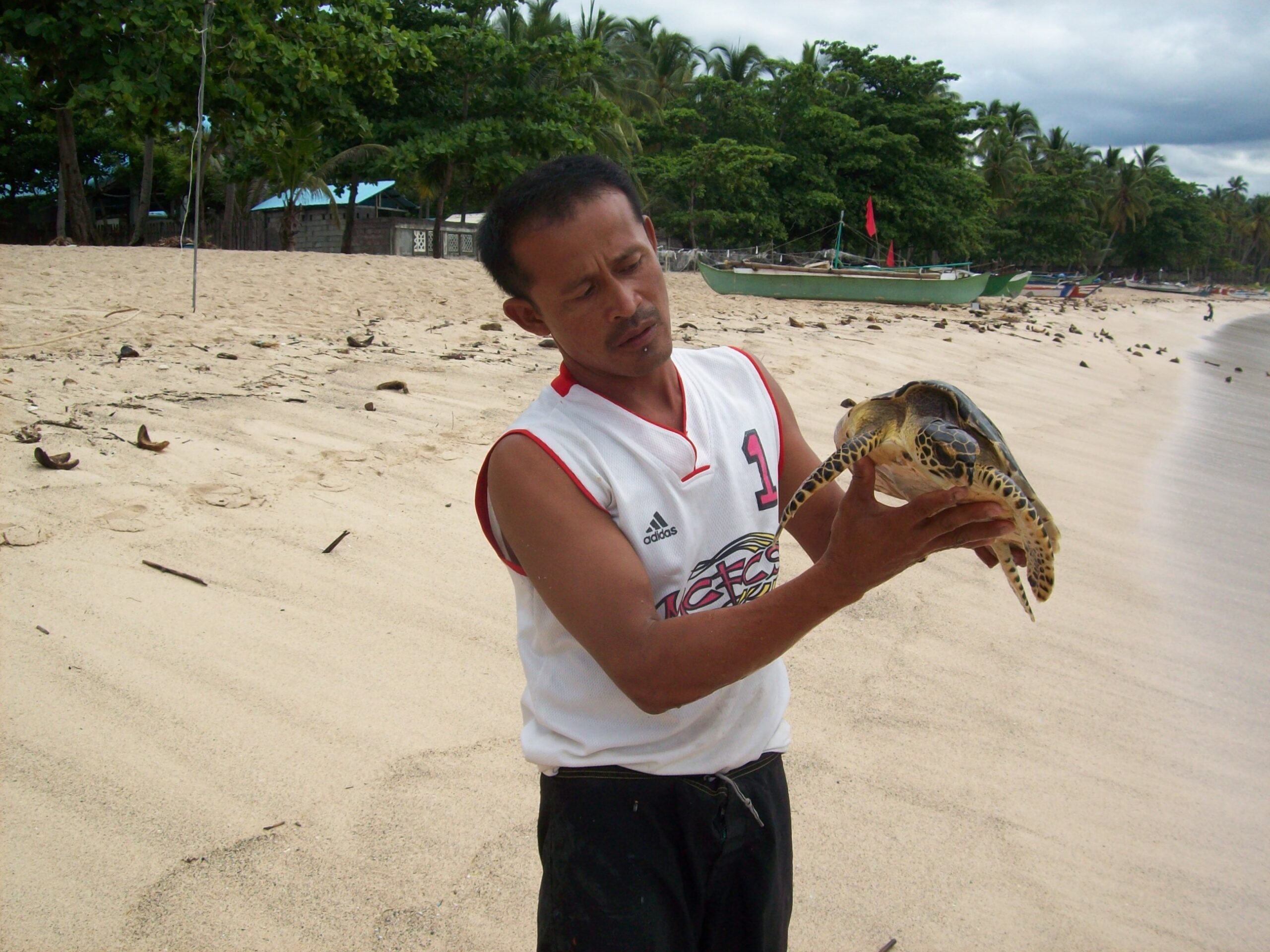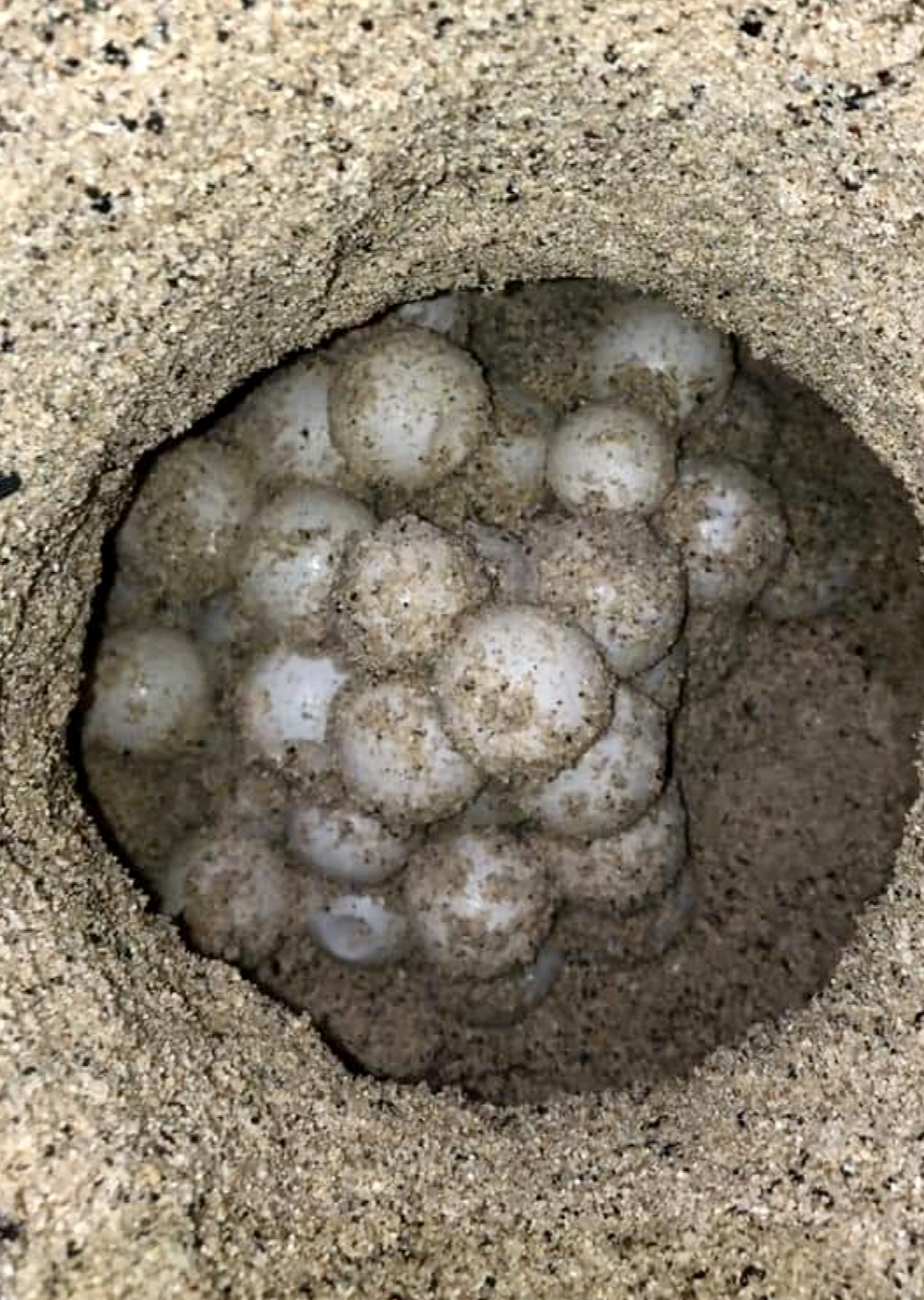Text and Photos by Henrylito D. Tacio
Marine turtles – locally known as pawikan – are among the gentlest creatures ever to exist. They have roamed the tropical seas, including our waters, without much change in appearance, thus earning them the moniker “the living fossils.” They may have existed along with the extinct dinosaurs.
“Some 200 million years ago, marine turtles developed as the earth throbbed with dramatic geophysical changes – surviving as their living conditions changed, adapting to the natural rhythms of prehistoric life,” wrote Marizal Calpito and Lourdes P. Calacal in an in-depth feature published in Canopy International. “Down through the ages, they thrived, remaining much the same as their hardy ancestors.”
There are only eight species of marine turtles known. But what most Filipinos don’t know is that five of these species can be in our waters, mostly in the Turtle Islands. These are the Green Sea (known in the science world as Chelonia mydas), Hawksbill (Eretmochelys imbricata), Loggerhead (Caretta caretta), Olive Ridley (Lepidochelys olivacea), and Leatherback (Dermocheyls coriacea).
The three other species, which cannot be found in our waters, are the Kemp’s Ridley (Lepidochelys kempi), Flatback (Chelonia depressa), and Black Sea (Chelonia agassizi).
Unfortunately, all eight species are listed under the Appendix I of the Convention on International Trade of Endangered Species of Wild Fauna and Flora (CITES), which means the trade of these species and subspecies is strictly “prohibited except for educational, scientific or research and study purposes.”
The Conservation of Nature and Natural Resources (IUCN) has also classified the eight species as endangered. This is so because “their populations are in danger of extinction and whose survival is unlikely if the causal factors continue to operate.”
Just like in the past, marine turtles are still hunted for their meat and leather.
Rural fisherfolk have been using marine turtle blood, hatchlings, and liver as a cure for asthma. Others gather the turtle’s tail for its aphrodisiac properties. The bone gives an excellent soup, which the Chinese consider a delicacy.
Marine turtles are also hunted to make different products. The Hawksbill’s carapace is used to make combs, brush handles, eyeglass frames, buttons, hair clips, and jewelry.
Immature Hawksbill and Green Sea turtles are killed and stuffed for ornamental purposes like home decor.
Marine turtles are used as come-ons for tourism purposes. But instead of helping these endangered species, tourism even helps them to be decimated.


“Tourism in natural places that does not take into account the effect they have on the environment is the threat,” explained Dr. Arnel “AA” Yaptinchay, founder and director of the Marine Wildlife Watch of the Philippines.
In the country where every inch of its beaches will soon be developed for tourism, this will become a big threat for marine turtles.
According to Dr. Yaptinchay, development of the coast where buildings are to be constructed will displace marine turtles from one of their most important life cycle habitats, referring to the nesting beach.
“Lights, infrastructure, noise, domestic animals, and pollution will not only disturb those nesting females but also their hatchlings,” he said. “Marine turtles will not nest when disturbed.”
As if those are enough, marine turtles are ground up by dredges, run over by pleasure boats, poisoned by pollution, strangled by trash, and drowned by fishline and net.
Since 2001, hunting, sale, and killing of marine turtles have been banned in the Philippines. The Wildlife Conservation Act, or Republic Act No. 9147, penalizes violators with a fine of up to P100,000 and one year in jail.
Despite sincere efforts by the government and some environmentalist groups to save marine turtles from extinction, the decimation of the endangered species continues unabated.
“All of the species found in our country are endangered except for the Hawksbill which is critically endangered,” Dr. Yaptinchay said. “The only sure thing is that marine turtle populations are under tremendous threats and if these are not stopped, extinction is imminent.”
Once these marine turtles are extinct, they can never be seen again. Because of this, environmentalists urged Filipinos to stop their disappearance from our waters. We need them alive more than dead. If they can live up to 57 years, do you know how much is its economic use value?
An estimated whooping P4.80 million, according to a study done by the Biodiversity Management Bureau (BMB), a line agency of the Department of Environment and Natural Resources (DENR).
The estimation was based on the animal’s ecological role in coastal and marine ecosystems (P900,000) and on the tourism value it generates (P3.90 million).
“The annual use value of the entire population of the Philippine marine turtle, which is conservatively estimated at 7,294 individuals, ranged between P2.89 billion and P3.19 billion (US$57.88-63.85 million) per year,” the study said.
“Marine turtles serve as a barometer of our planet’s health,” says the DENR’s Pawikan Conservation Project. “It is possible that in a world in which marine turtles cannot survive may soon become a world in which humans struggle to survive.”
It added that in “saving one of the earth’s most mysterious and time-honored creatures, we might just be saving ourselves, too.”

